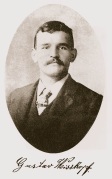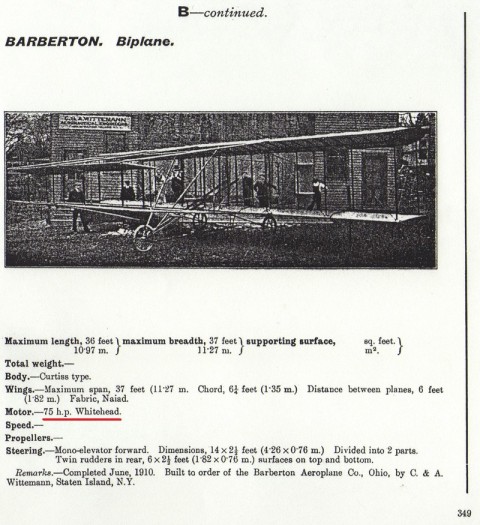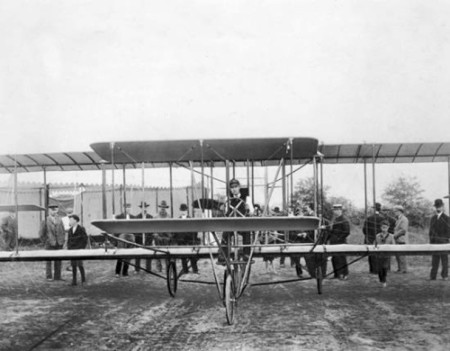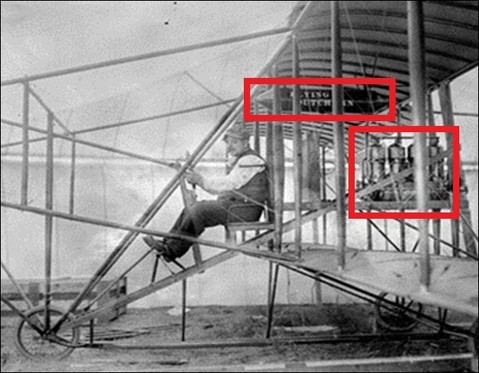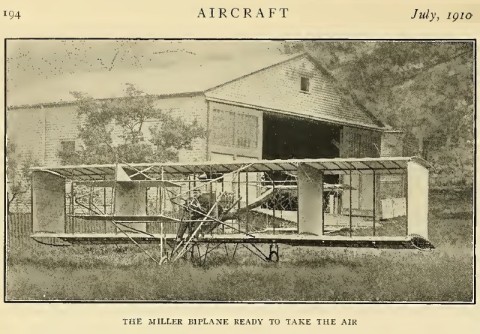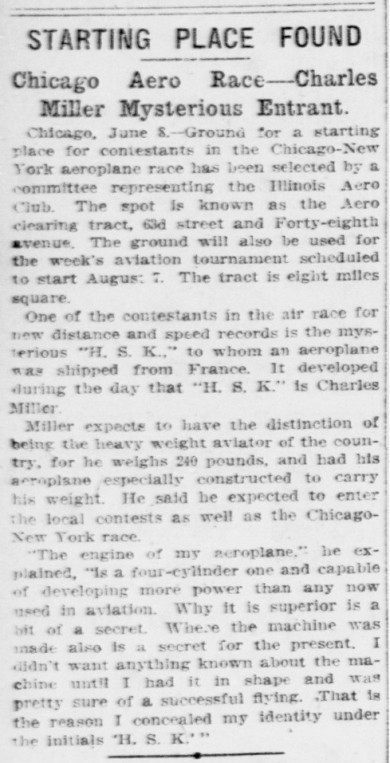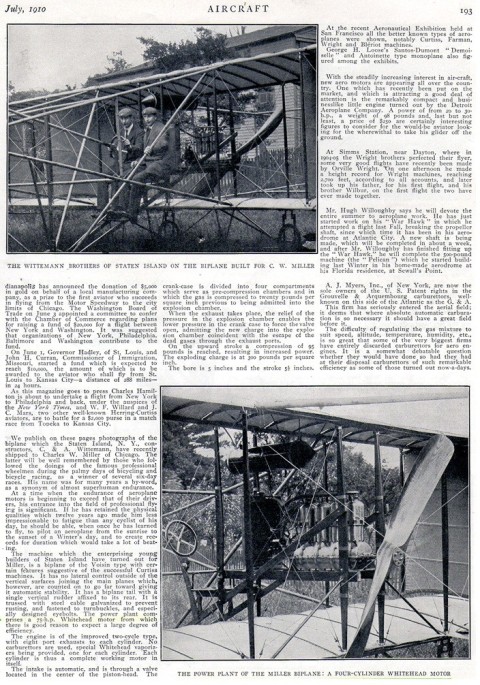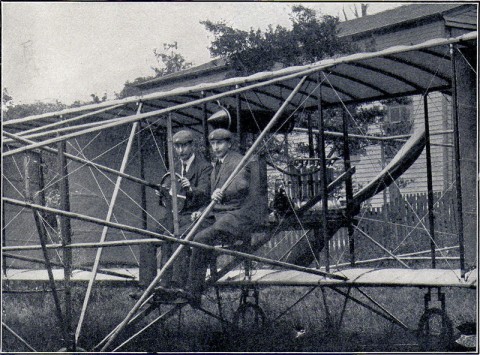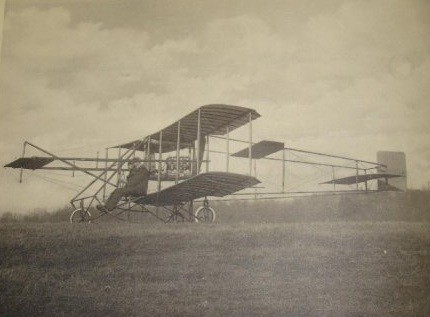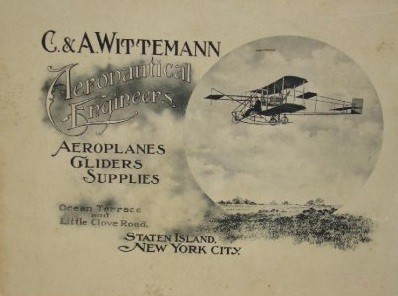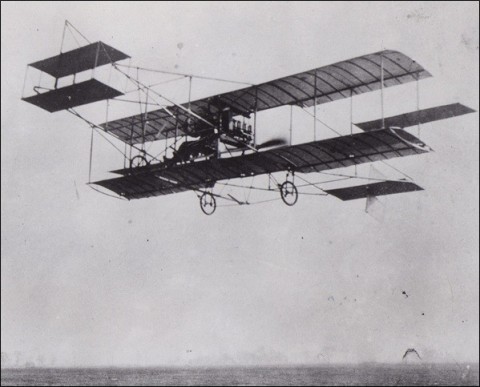Wittemann is known to have installed Whitehead motors in several planes. Below, two of them are shown; Barberton Biplane (pictured in "Jane's" - note Wittemann sign in the background) and Charles Miller's biplane (pictured in "Aircraft", below that):
Barberton Biplane, "Jane's All the World's Aircraft", 1910, p.349
The Barberton biplane was financed by citizens and corporations of the small, Ohio town of the same name. $864 was paid for the motor - according to Jane's, a Whitehead. The aircraft first flew on June 18, 1910. On the last flight that day, pilot Michael J.Paridon, navigated a full circle. On July 2, 1910, Paridon stalled at a height of 100 ft. and crashed. Neither he nor the aircraft ever flew again.
Charles W. Miller's Biplane
Charles W. Miller of Chicago, Illinois, had been a famous cyclist, competing internationally, before getting involved in aviation. He had competed in six-day races at Madison Square Garden, winning in 1897, 1898 & 1899. There, he was known as the "Flying Dutchman".
His entry to aeronautics was celebrated with great fanfare by the press and made front-page news across the USA. His first event was the Chicago to New York Air Race.
Miller registered for the race under a psydonym (H.S.K.). Once his identity became known, he refused to give details about who built his aeroplane (Wittemann) or his engine (Whitehead), saying it was a secret. All he would say was:
"The engine of my aeroplane is a four-cylinder one and capable of developing more power than any now used in aviation." (see NY Tribune, below)
Ogden Standard, June 8, 1910, p.1
New York Tribune, June 9, 1910, p.2
“Aircraft”, 1910-07, p.193
“The powerplant comprises a 75-h.p. Whitehead motor from which there is good reason to expect a large degree of efficiency. The engine is of the improved two-cycle type with eight port exhausts to each cylinder. No carburettors are used, special Whitehead vaporizers being provided, one for each cyclinder. Each cylinder is thus a complete working motor in itself."

